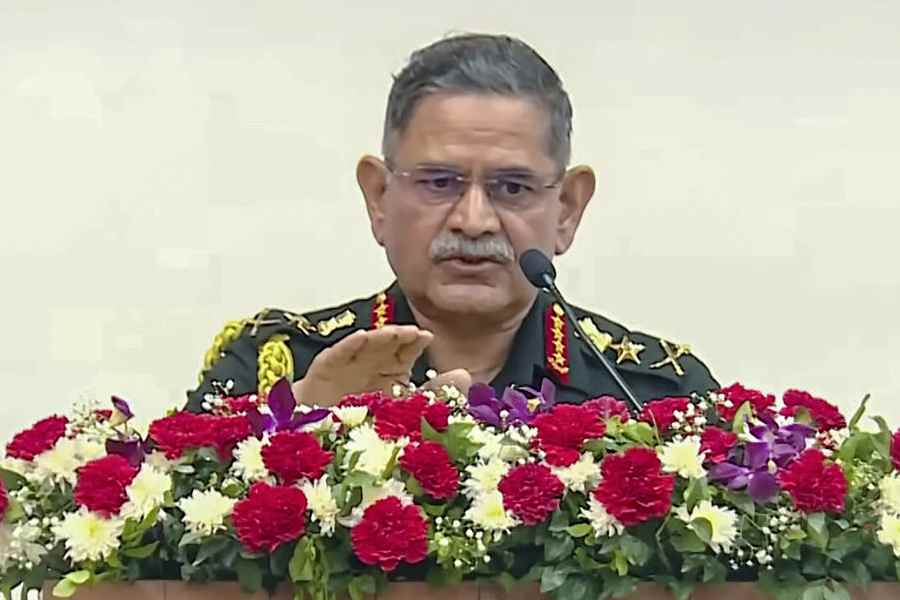 |
Brevity: n. 1 economy of expression; conciseness. 2 shortness of (time etc.) — The Concise Oxford English Dictionary
“Briefly, in conclusion...” How many times have you heard a speaker say this in the course of a rambling, monotonous, soporific speech? You are sharply brought back to life only to return to your state of semi-stupor, simply because the promised conclusion takes so long to reach.
Perhaps, as teachers, most of us are so long winded ourselves that we have trouble inculcating the precious quality of brevity in our students and we unwittingly unleash in society painfully verbose people, generation after generation. Our profession demands that we explain, repeat, drill and recapitulate but it also requires us to summarize briefly at the end of every lesson. Students too must be taught — and not for formal précis-writing exercises only — to define succinctly, answer concisely and ask questions clearly. Every now and then we are made to realize that we do not do a good job of teaching our students the art of asking questions. Book launches, seminars and panel discussions bring home this deficiency when mini-lectures, maxi-comments and unintelligible questions buried in convoluted meanderings are inflicted on all as soon as questions from the audience are invited. It is imperative that teachers ask different kinds of questions briefly and unambiguously themselves and demand the same from students.
In today’s context of the pressure of time and limited attention spans, we need to function within increasingly short time frames. In this, we are receiving help indirectly from unexpected quarters — technological development. Instant communication such as emails, text messages and tweets do not lend themselves to lengthy expression. One of our ex-students, who teaches at Berkeley, California, permits her students to tweet questions during her lectures and these are projected on the giant screen above the podium through live streaming. This ensures that the questions are short — within 140 characters — and enables the lecturer to respond at her convenience. Pritish Nandy’s new book, Stuck on 1/Forty is a series of “Twitter poems”. On being asked whether such ‘super short poetry’ worked, his reply was that it was important to catch the spirit of the times. He also added that short poems were likely to appeal to younger readers because they are impatient. Recently, the United Kingdom daily, The Guardian, asked 21 well-known authors from Ian Rankin to Jeffrey Archer to try their hand at “Twitter fiction” which had to be completed within 140 characters.
Long before technology demanded brevity of expression, Rabindranath Tagore produced sparkling gems through his ‘super short poems’. These poems, which were mostly jotted down on handkerchiefs or fans (when he was in China and Japan), are now available to us in three collections named Kanika, Lekhan and Sphulinga. Indeed, centuries before Tagore, a demonstration of disciplined brevity was found in our Sanskrit and Prakrit slokas. A classic example of brevity that makes an impact, closer to our times, is Abraham Lincoln’s famous Gettysburg address which comprised 10 sentences and was delivered within three minutes. Very few remember the two-hour keynote speech of the renowned orator, the Harvard president, Edward Everett, which preceded Lincoln’s address.
While we discourage lengthy expression, unless it is in literary work, we have also been warned “never to be so brief as to become obscure”. I think we would all agree that clarity is at the heart of all good communication.
The record for brevity and clarity is perhaps still held by the legendary comment made by the surrealist painter, Salvador Dali —“I will be so brief I have already finished.” The length of our expression must actually depend on the demand of the situation. Students are required to give a single term as answer, write a ‘short note’ or compose a long essay-type answer, depending on the nature of the question. We find that many students are unable to present an idea or a thought or even a definition concisely not because of poor language skills but because of unclear concepts. In such cases, concise expression will naturally follow once concepts are strengthened. With regard to longer answers, all teachers are familiar with padding — a strategy that students resort to when they do not know enough about a topic. They try their best to make their answer seem respectably substantial even though they have nothing to say. An example of this that comes to mind is a certain student’s answer when she was asked to compare Buddhism and Jainism. “The first important difference” she wrote, “between the two religions mentioned, that is Jainism and Buddhism, is that Buddhism is Buddhism and Jainism is Jainism.” The teacher commented that she was happy to know that there was a philosopher in the making in her class but she was unable to give her any marks for that particular piece of profound observation.
Earlier I had mentioned that instant electronic communication supported the need for brevity. The constant texting of young people — which a journalist graphically calls “chewing gum for fingers” — irritates the older generation no end but in the process youngsters do get practice in brevity and in coining abbreviations. Nevertheless, I hear most teachers bemoaning the fact that the tendency to abbreviate ‘just about everything’ has now resulted in unclear or even unintelligible communication all around. Yes, I do agree that though older people have got used to recently introduced abbreviations such as AWOL, AKA, FYI and ASAP, we are still struggling with a host of emerging ones like MMYT (mail me your thoughts) or SWDYT (so what do you think?). And I certainly didn’t realize that every time I put down my own initials I could be conveying that I don’t know! Somehow, I never worried about this trend and was doubly reassured that no real harm was being done after reading David Crystal’s very interesting book titled Txtng: the Gr8 Db8. This book informs us that even in the 18th century, Joseph Addison complained about the way words were being ‘miserably curtailed’ such as pos for positive and incog for incognito, while Jonathan Swift thought that abbreviating words was a ‘barbarous custom’. Yet the universally used NB for nota bene, PM for post meridiem and IOU for I owe you originated in the 17th and 18th centuries. Even old gravestones bear the abbreviation RIP. But just as most students are careful about their audience or readers — mostly their teachers — in their use of language, they are also selectively discreet in their use of abbreviations. This is an SMS poem by a 12-year-old: quik hurry up and txt me/tell me u luv me/tell me im da 1/oops wrong person/i sent it to my mum.
We may keep brevity and clarity in mind when we are writing or speaking but it is risky to lay down a formula when we think of the endless variety of situations in which we are required to communicate. Brevity can be interpreted as terseness or rudeness even if the communication is clear. Jokes abound about the uncommunicative American president, Calvin Coolidge, nicknamed Silent Cal, to the extent that a Hollywood filmstar asked after his death, “How did they know?” But it was also rumoured that compared to the father, the son was “an absolute chatterer”. The senior Coolidge had once received an invitation to attend a presidential event. His reply, which was both clear and brief, was: Dear Gentlemen,/ Can’t come./ Thank you./ John Coolidge.
Repetitiveness is something that most teachers frown upon. But here too we need to be careful about the context. Some decades ago, though it seems just the other day, as college students we were held spellbound by our professor’s rendering of Macbeth’s “Tomorrow, and tomorrow, and tomorrow...” and we knew that not even one ‘tomorrow’ could be sacrificed.
Briefly, in conclusion, I think it can be safely said that strict rules and formulae in writing and speaking cannot be laid down. It is hoped that while honing their skills in writing, our students will develop a degree of contextual sensitivity. It is also hoped that they will be able to use their judgment as to when to speak, when to speak at length and when not to speak at all.










